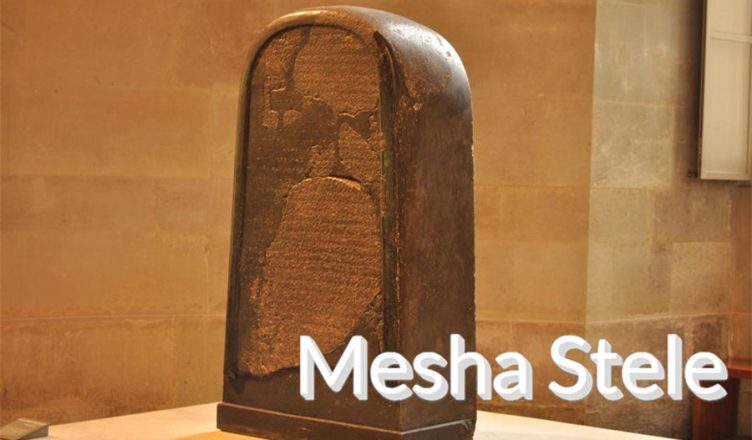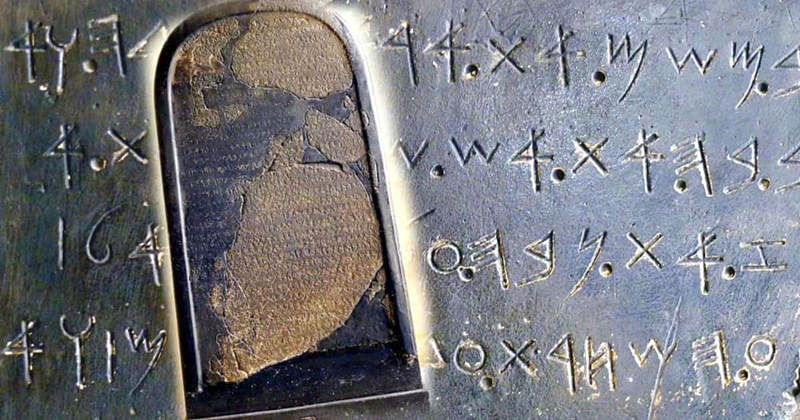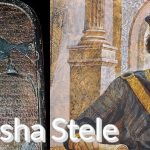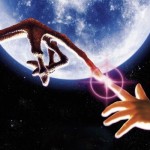The Mesha Stele (also known as the Moabite Stone) is an ancient inscribed monument in Moabite script, made of black basalt, measuring 44″x27″, with 34 lines of Moabite text. It is currently housed in the Louvre Museum in France.
The stele commemorates an event from the 9th century BCE when King Mesha of Moab successfully defeated the kingdom of Israel and reclaimed independence for the land of Moab. While the specific battle described on the Mesha Stele is not the same as the one mentioned in 2 Kings 3:4, it does reference figures and events from the Bible, such as Ahab’s father Omri, likely indicating Ahab himself, the Omride dynasty, the kingdom of Israel, the Davidic dynasty, and some biblical places like Dibon and Medeba.
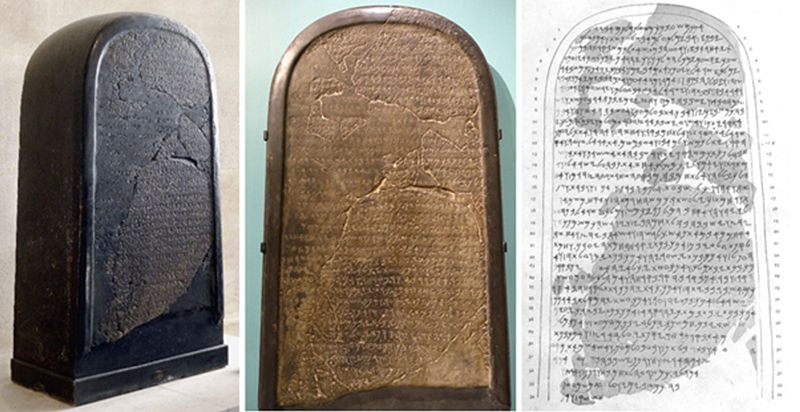
The Mesha Stele was discovered in Dhiban, Jordan (ancient Dibon, located about 3 miles north of the Arnon River), in 1868. After its discovery, it gained attention from both English and French authorities. Local residents believed that breaking the stele into pieces would fetch more money, and they attempted to do so. Fortunately, before it was completely shattered, an impression was made on paper. French diplomats and amateur archaeologist Charles Clermont-Ganneau invested considerable effort in reassembling the fragments, relying on the paper impression to reconstruct portions of the text.
Summary of the Mesha Stele:
The Mesha Stele, also known as the Moabite Stone, was discovered in eastern Jordan in 1868 and dates back to the 9th century BCE. The inscription recounts the story of King Mesha of Moab’s successful rebellion against the oppression of ancient Israel, celebrating his independence.
The conflicts between Moab and Israel are also described in the Bible, with the Mesha Stele offering the Moabite perspective. 2 Kings 3 narrates the alliance of Israel, Judah, and Edom against the rebellious Moab, and both the Mesha Stele and 2 Kings 3 record Moab’s earlier status as a vassal state to Israel. The Mesha Stele attributes Moab’s oppression to the anger of Moab’s god, Chemosh.
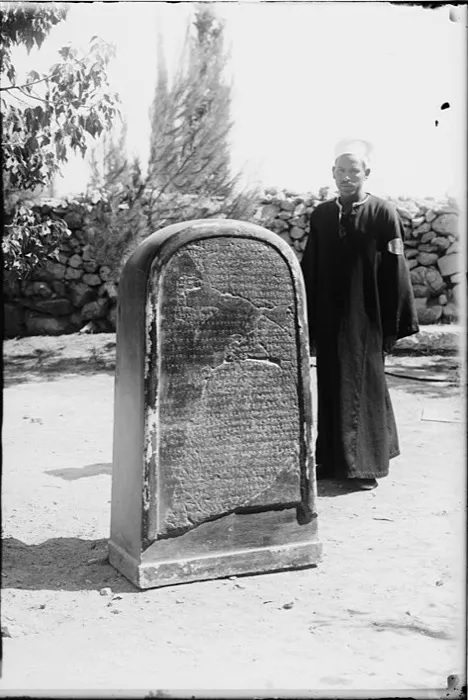
According to Mesha, Moab had been a vassal state of Israel for 40 years, and they had to pay tribute to the Israelite king, including significant amounts of wool from lambs and rams. After the death of Ahab’s son, Ahaziah, and the rise of Ahab’s grandson Jehoram as king of Israel, King Mesha of Moab successfully rebelled and achieved independence.
The Mesha Stele contributes to various aspects of human civilization:
- It provides historical context for Moab and Israel beyond the Bible, especially regarding figures like King Mesha (2 Kings 3:4), Omri (1 Kings 16), David, and the existence of Israel, as it is an external perspective attesting to Israel’s presence. This complements the Dan Inscription.
- It offers insights into the historical geography of Moab, especially the strategic significance of the Plains of Medeba.
- It sheds light on the wars and construction activities of King Mesha, illustrating the responsibilities and role of Near Eastern kings in building projects and maintaining justice.
- Theological insights into the relationship between God and land are evident in Mesha’s account. Moab’s subjugation by Israel is attributed to the anger of Moab’s god, Chemosh, and their subsequent liberation is seen as a divine blessing, which resonates with Hebrew theology.
- The connection between war and divine guidance, where Mesha’s military actions are in accordance with the instructions of Chemosh, parallels Hebrew concepts.
- The Moabite language on the stele, from the 9th century BCE, shares linguistic similarities with ancient Hebrew, including verbs like “to be” (HWY/HYY), the narrative preterite (wayyiqtol), and other words (e.g., “to build” – SY, “gold” – ZHB, relative pronoun – ‘aser). The linguistic connection between Moabite and Hebrew suggests a common geographical origin.
- Linguistic characteristics of the East Jordanian languages are not limited to Hebrew and Moabite but also extend to Aramaic (including the Dan Inscription in Aramaic).
END:
In May 2019, scholars reevaluated the Mesha Stele and the pre-damaged inscription, suggesting that line 31 originally referred to “Balak” rather than the “House of David.” This interpretation aligns with the name of the Moabite king Balak mentioned in Numbers 22-24.
The Mesha Stele significantly contributes to archaeological topics related to biblical history, biblical geography, Near Eastern religion, warfare and military records, the political situation in Iron Age eastern Jordan, the relationship between Hebrew, Moabite, and Canaanite languages, and the origin of the Israelite people.
More UFOs and mysterious files, please check out our YouTube channel: MysFiles
Lacerta Files: Human beings are the product of genetic engineering by alien civilizations.
